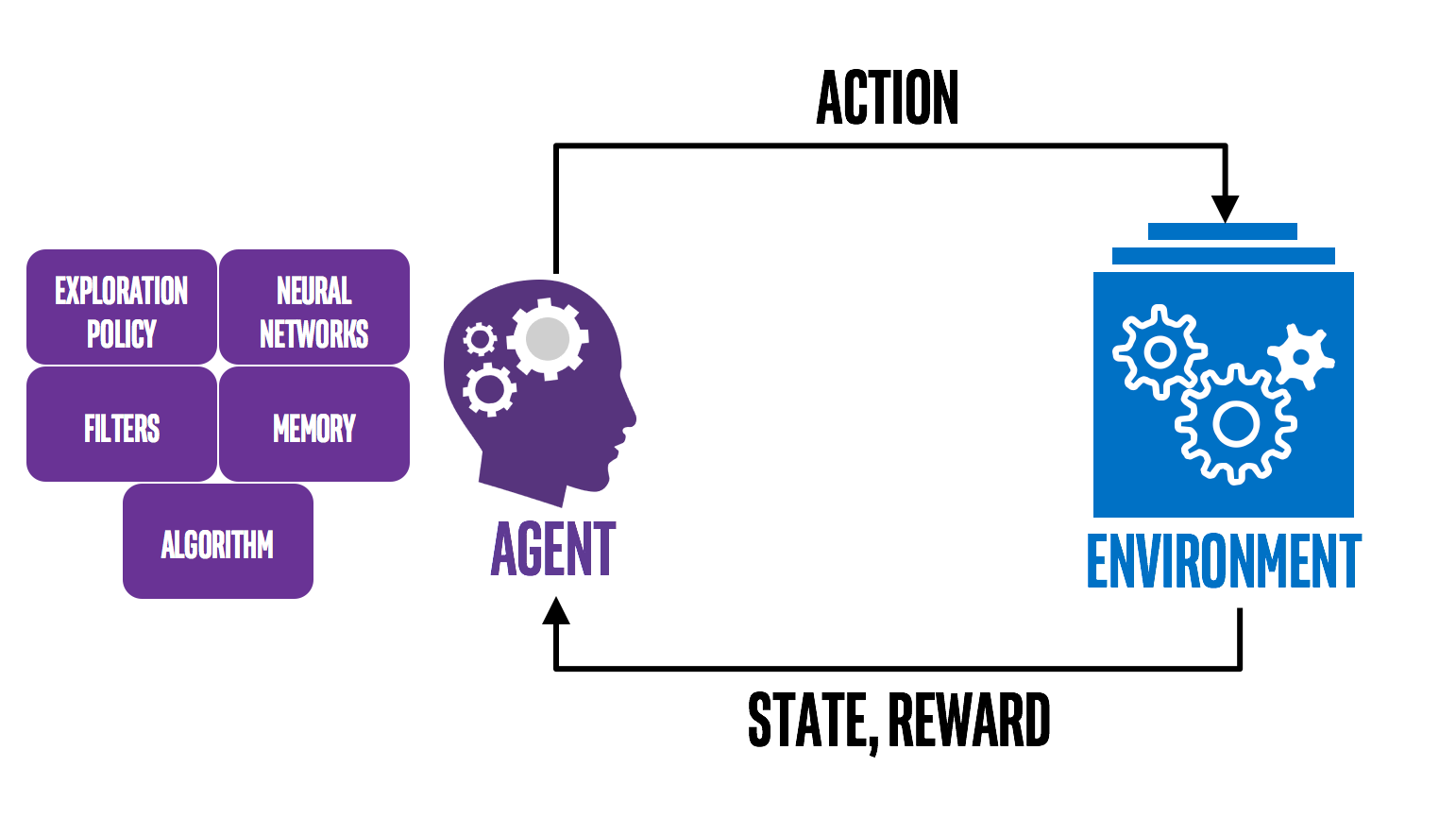Reinforcement Learning (RL) is a machine learning paradigm inspired by behavioral psychology, where an agent learns to make decisions by interacting with an environment to achieve some goal. The agent receives feedback in the form of rewards or penalties for its actions, and its objective is to learn a policy that maximizes the cumulative reward over time.
Here’s a breakdown of some key concepts in reinforcement learning:
- Agent: It observes the state of the environment, selects actions, and receives rewards.
- Environment: It responds to the actions taken by the agent and transitions between states.
- State (s): It contains all relevant information needed for decision-making.
- Action (a): The choices available to the agent at each state. These actions lead to transitions to new states and influence the rewards received.
- Reward (r): Feedback from the environment to the agent after taking an action.
- Policy (π): A strategy or mapping from states to actions that guides the agent’s decision-making process.
- Value Function (V): Estimates the expected cumulative reward from being in a particular state or following a particular policy. It helps the agent evaluate the goodness of states or actions.
- Q-Value Function (Q): Estimates the expected cumulative reward of taking a particular action in a given state. Q-values are used in action selection and evaluation.
In model-based RL, the agent learns a model of the environment dynamics (transitions and rewards) and uses it to plan ahead. In contrast, model-free RL directly learns a policy or value function without explicitly modeling the environment.
Some popular RL algorithms include:
- Q-Learning: A model-free algorithm that learns the Q-values for state-action pairs and uses them to select actions.
- Deep Q-Networks (DQN): Extends Q-learning by using deep neural networks to approximate the Q-values, enabling RL in high-dimensional state spaces.
- Policy Gradient Methods: Directly learn the policy by optimizing the parameters of a policy function with respect to the expected cumulative reward.
Reinforcement learning has a wide range of applications, including robotics, game playing, recommendation systems, finance, healthcare, and more. In the context of sustainability, RL can be used to optimize resource allocation, energy efficiency, traffic management, environmental monitoring, and other areas to promote sustainable practices and mitigate negative impacts on the environment.
